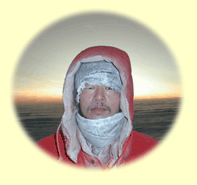|
Lecture 1 : BERNARDI, Giorgio
(Stazione Zoologica Anton Dohrn, Italy)
“ Natural Selection in Genome Evolution ”

The vertebrate genome is a mosaic of GC-poor and GC-rich isochores, megabase-sized DNA regions of fairly homogeneous base composition that are different in relative amounts, gene density, gene expression, replication timing and recombination frequency. At the emergence of warm-blooded vertebrates, the gene-rich, moderately GC-rich isochores of the cold-blooded ancestors underwent a GC increase that was similar, and was maintained, in all different orders of mammals and birds. Both the GC increase and its maintenance can be explained by the neo-selectionist theory of genome evolution, which fully accepts Ohta’s nearly neutral view of point mutations, but proposes, in addition, a solution to the neutralist/selectionist debate.
|
|
Lecture 2 : SATO, Katsufumi
(International Coastal Research Center, Ocean Research Institute, The University of Tokyo, Japan)
“ History of Biologging Science: the Best Journey of the World ”
 In the past, it was very difficult or impossible to investigate the physiology and behavior of aquatic animals, which can migrate several thousand kilometers and dive deeper than several hundred meters. To investigate their underwater world, we have deployed small recorders on animals to monitor their physiology and behavior under natural conditions. Since this method “Bio-logging” started with studies of Weddell seals using time-depth recorders in Antarctica in the 1960's, there has been a steady evolution of animal-borne recorders. We are entering a new era of technology for measuring the behavior, physiology and environment of aquatic animals throughout the oceans of the world.
In the past, it was very difficult or impossible to investigate the physiology and behavior of aquatic animals, which can migrate several thousand kilometers and dive deeper than several hundred meters. To investigate their underwater world, we have deployed small recorders on animals to monitor their physiology and behavior under natural conditions. Since this method “Bio-logging” started with studies of Weddell seals using time-depth recorders in Antarctica in the 1960's, there has been a steady evolution of animal-borne recorders. We are entering a new era of technology for measuring the behavior, physiology and environment of aquatic animals throughout the oceans of the world.
水平方向に数千キロメートル、鉛直方向にも数百メートルといった広い行動圏を有する海洋動物において、各個体の行動や生理に関する現場測定を可能にするために、動物搭載型の小型記録装置が開発された。最初の装置が南極のウェッデルアザラシに搭載されて以来、装置の大容量化・多パラメータ化・小型化が進み、対象動物も魚類・爬虫類・鳥類・哺乳類に広がった。ハイテク装置を用いた海洋動物学が全世界の海で展開されている。
|

